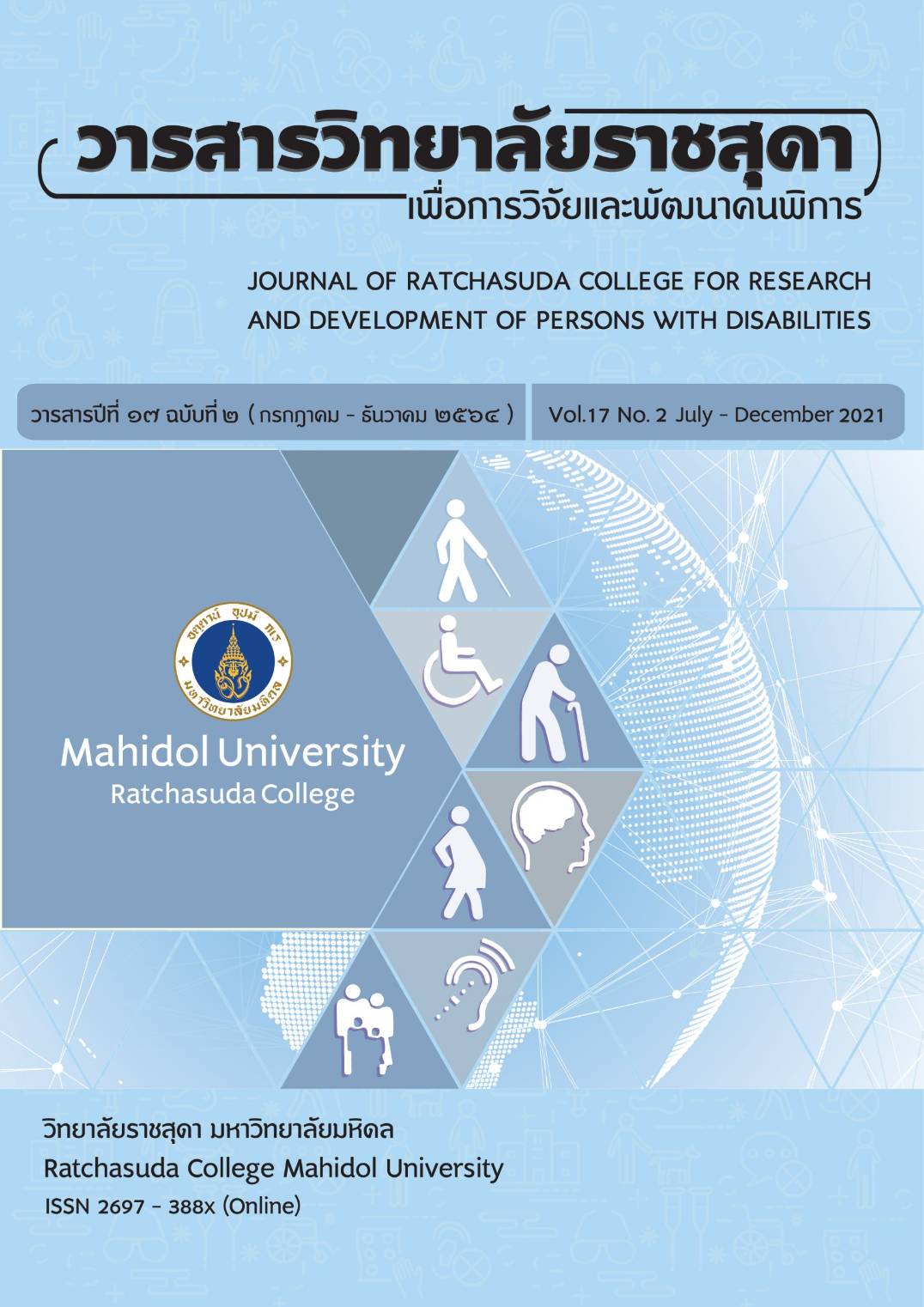The effect of gait rehabilitation with prosthesis on the mobility of hemiplegic patients with lower-limb amputation at Nakornpathom Hospital
Keywords:
Hemiplegic patients with lower-limb amputation, Mobility, Multiple disabilitiesAbstract
The objectives of this study were (1) to investigate the effect of gait rehabilitation with prosthesis on the mobility of hemiplegic patients with lower-limb amputation at Nakornpathom Hospital; and (2) to compare the mobility of hemiplegic patients with lower-limb amputation before and after wearing prosthesis. The sample consisted of 5 patients in Rehabilitation Subdivision under the Office of Nakornpathom Hospital, obtained by purposive sampling. Pre-experimental one group, pretest-posttest design. Independent variables for this study were general history taking, physical fitness assessment and gait rehabilitation with prosthesis program Dependent variable was Stroke Rehabilitation Assessment of Movement Thai version (Basic mobility) Inter-rater agreement ranged 0.96-0.99. Research findings were as follows: Comparison between before and after gait rehabilitation with prosthesis program on the mobility, the movement performance was better according to the increased percentage as (23.33/56.66), (40.00/70.00), (33.33/66.66), (23.33/60.00) and (23.33/60.00), the averaged increased percentage was 28.66/62.66, and every patient can walk with additional points [Walk 10 m. indoors: (0/2), (1a/2), (1a/2), (0/2) and (0/2)]. This finding supported the hypothesis whether hemiplegic patients with lower-limb amputation at Nakornpathom Hospital who received gait rehabilitation with prosthesis on the mobility were better.
Downloads
References
Chaikeeree, N., Wannapakhe, J., Boonsinsukh, R., Tantiwong, K., Phetchatchan, N., Wongkom, T., & Saribut, S. (2018). Stroke Rehabilitation Assessment of Movement Thai version (STREAM): Translation with reliability and concurrent validity study. Thai Journal of Physical Therapy, 40(1), 16-23.
Daley, K., Mayo, N., & Wood-Dauphinee, S. (1999). Rehability of score on the Stroke Rehabilitation Assessment of Movement (STREAM) measure. Phys Ther, 79(1), 8-23.
Jaipong, J., Somboon, P., & Chenaksara, N. (2016). The Locomotor Skills in Prosthetic Use and Quality of Life of Lower Limb Amputation Personsin Lamphun Province. Thai Journal of Health Systems Research, 10(4), 402-413.
Kamonsawat, N. (2014). Quality of life of trans-femoral and trans-tibial amputees after receiving prosthesis at prosthetic and orthotic unit, Rayong Hospital. J Prapokklao Hosp Clin Med Educat Center, 31, 18-29
National Statistical Office. (2019). The 2017 Disability Survey. Bangkok: Text and Journal Publication Co., Ltd.
Pinsuwan, M., & Bootcheewan, S. (2015). The Results of Multidisciplinary Care on the Rehabilitation of the Hemorrhagic Stroke Patients at the Male Surgery Ward, Phra Nakhon Si Ayutthaya Hospital. Journal of Preventive Medicine Association of Thailand, 5(1), 16-26.
Piriyapraserth, P. (2016). Stroke Assessment Tools. Thai Journal of Physical Therapy, 38(3),
-136.
Prasat Neurological Institute. (2016). Clinical Practice Guidelines for Stroke Rehabilitation. Bangkok: Tana Press Co., Ltd.
Sungkarat, S., Uthaikhup, S., Keawsutthi, M., Charoenlimprasert, J., & Kaewsanmuang, S. (2017). Intra- and inter-rater reliability of the Stroke Rehabilitation Assessment of Movement (STREAM). Journal of Associated Medical Sciences, 50(1), 71-84.
Utrarachkij, N., Reecheeva, N., Siriratna, P., Thamronglaohaphan, P., & Chira-adisai, W. (2016). Functional
Outcomes of Upper and Lower Limbs after Rehabilitation Program in Sub-acute and Chronic Stroke patients at Ramathibodi Hospital. Thai Journal of Rehebil Med, 26(2), 47-53.
Yesuwarn, T., Uppayothin P., & Jivacate T. (2012). Thai Lower Limb Amputees: Stigma Process and Adaptation. Journal of Thai Rehabilitation Medicine, 22(2), 51-57.
Downloads
Published
How to Cite
Issue
Section
License
บทความที่ได้รับการตีพิมพ์เป็นลิขสิทธิ์ของวารสารสถาบันราชสุดาเพื่อการวิจัยและพัฒนาคนพิการ





